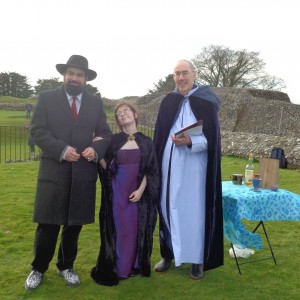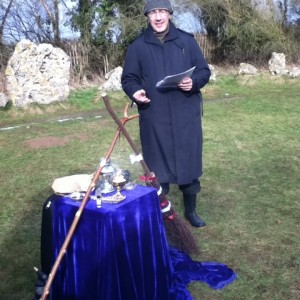
What is Handfasting?
People are always asking me what a handfasting is. I confess, before I became a Civil Celebrant, I had never heard of it, so I am happy to pass on what I have learned.
There’s no straightforward answer, actually, because it depends on the degree of handfasting you’re interested in.
What are its Origins?
The ceremony (not in the form we know it today) dates back some 4,000 years to the Celts.
In the Middle Ages, a “handfasting” was used as a term meaning engagement to be married. Once the couple had formally declared their vows to each other, they were legally married. During the handfasting, each of the pair would take the other by the right hand and declare out loud that they there and then accepted each other as man and wife.
A Lovely Touch
If you just like the idea, your celebrant can include a handfasting in your wedding (or vow renewal) ceremony after saying your vows. Prince William and Kate had some ribbons draped over their hands during their wedding, because they accepted that it was a beautiful ritual.
A Different Perspective
Many people, particularly pagans, see the handfasting ceremony as comprising their wedding itself. Rather than being an ‘incidental’, or a ‘lovely touch’, this can be seen as a vital component.
The prayers and readings may invoke the four elements (earth, wind, water and fire) to bring blessing to the couple. A variety of symbols (which could include, salt and incense) play a part, and several people may be invited to be active participants.
The Pagan Ceremony
The type of handfasting chosen depends upon the type of pagan involved in the ceremony.
The marriage vows can be for “a year and a day”, when the cords or ribbons are loosely tied, symbolising that the handfasting is a commitment, but not more; after a year and a day, the couple can return and repeat their vows with the cords tightly knotted (as now this is considered binding). Alternatively, the vows can be for “a lifetime”, “for all eternity” or “for as long as love shall last”.
Some ceremonies, as we have seen, are incidental to the wedding; others can last up to an hour. Some are very traditional, others quite modern. Most are conducted within a ceremonial circle (symbol of eternity).
Tying the Knot
The symbolic act of tying a married couple’s hands together may be relatively recent (though based on tradition). In fact, the use of ribbons and cords may date from this millennium.
Be that as it may, the idea of “tying the knot” comes from this custom. In some cases, the story goes, the couple was supposed to remain bound together until midnight!
However you view a handfasting, it is a delightful ceremony that can really enhance your wedding. It is deservedly gaining in popularity – and, of course, can be held in some wonderful venues, such as stone circles including, if you get in early enough, Stonehenge. Imagine that!
Michael Gordon can help prepare and conduct a tailor-made civil ceremony in or around London or, indeed, in Europe.

